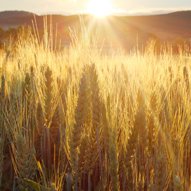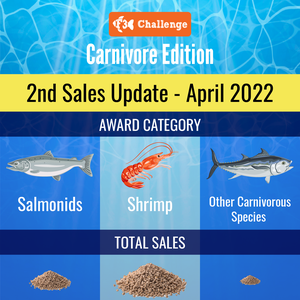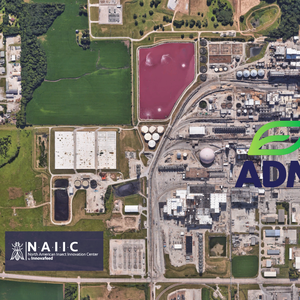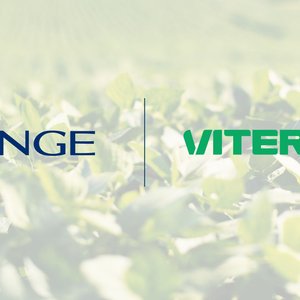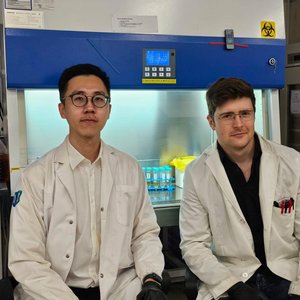Organicin Scientific is one of the 15 startups selected for the 2022 Nutreco Feed & Food Challenge. The startup creates a bacteriocin-based functional feed additive that aims to support sustainable initiatives by preventing disease and gut dysbiosis, and reducing the need for antibiotics in aquaculture.
In a recent interview with Griffin O'Driscoll, co-founder of Organicin Scientific, Aquafeed.com got some insights into the new solution the company is developing for the aquafeed industry.
How did the idea come up?
The story of Organicin begins at UMass Amherst, where Dr. Riley is a professor of biology and carries out her academic research. Mat Mitchell and I joined her research efforts as undergraduate biochemistry students, working on the application of bacteriocins to treat crop diseases such as fire blight.
As new to science as we were, we understood that antibiotic resistance was top of mind for governments and world health organizations and that alternatives were desperately needed. After working with bacteriocins for a few months and educating ourselves on the bacterial disease treatment landscape, we became firm believers that bacteriocins were the answer to the question of what a post-antibiotic era would look like.
In 2019, we were sitting in a lab meeting (a Wednesday) when Dr. Riley mentioned the business school was hosting a pitch competition and asked if anyone was interested in pitching; applications were due that Sunday. Mat and I raised our hands and built our first iteration of bacteriocin-based biotech over the next 4 days.
While the company looks very different today than it did back then, our focus on commercializing bacteriocins and reducing the world's reliance on antibiotics is still core to our mission.
What are your product capabilities and why is it unique?
The idea of using bacteriocins to prevent and treat bacterial disease is nothing new. Dr. Riley has been studying bacteriocins for decades, with over 100 publications authored on the matter. However, finding the right bacteriocin for the right job (i.e., a disease and a species) is difficult as the way we treat and deliver the protein to shrimp is quite different than that of an oyster, or an apple tree, or a chicken; different environments and systems. Thus, the company sought to take a platform approach – become the best in the world at identifying and selecting bacteriocins so we can develop solutions to all bacterial diseases, in all species. In essence, maximize impact through scale.
What is really differentiating is that bacteriocins are narrow-acting antimicrobials that preferentially target bacteria. Thus, we are able to kill the “bad bacteria” while leaving the “good” bacteria alone. This is hugely advantageous as the good bacteria are able to flourish and support health and growth.
For a species like shrimp where the microbiome is for all intents and purposes the immune system, this value proposition really resonates with farmers. The high specificity also means resistance is rather insignificant.
Additionally, as they are proteins, they also biodegrade quite easily and provide nutrition. We like to think of bacteriocins as magical food, providing nutrition and protein while preventing disease. It’s almost like combining the best parts of a probiotic and an antibiotic – complete inhibition, microbiome modulation, and completely biodegradable.
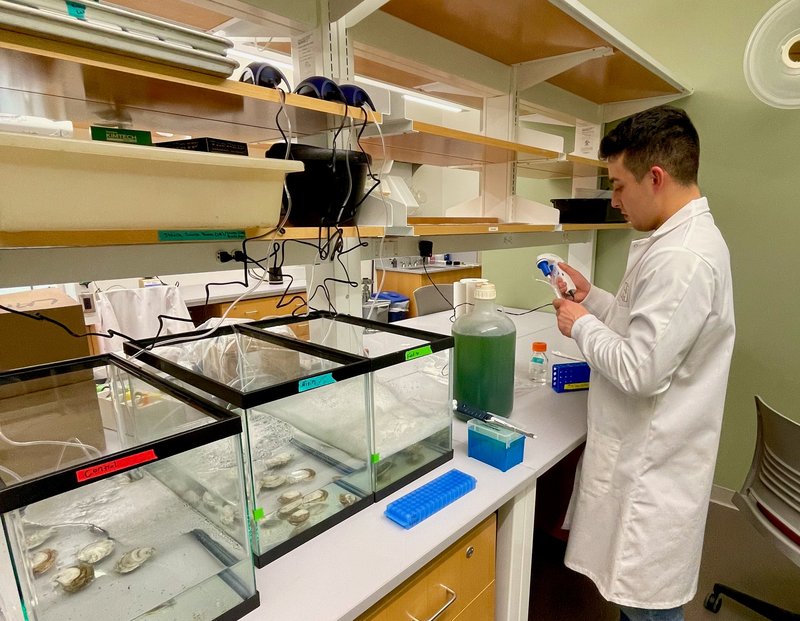
What is the current stage of development? Have you tested it in vivo in aquaculture species?
Our platform has identified over 100+ bacteriocin candidates, we will continue to develop our platform and grow our library in tandem with the development of our two products, a post-harvest process for oysters and a functional feed additive for shrimp that prevents AHPND. We have a proof-of-concept with our first candidate that inhibits Vibrio parahaemolyticus in vitro. We are planning in vivo challenge trials this summer to better understand dosing.
What potential markets do you target, in terms of species and regions?
We are targeting the oyster and shrimp market, whereas our oyster product is a post-harvest process and our shrimp product is a functional feed additive. I will focus on shrimp here as it is more relevant.
We are concerned with Vibrio parahaemolyticus initially, the causative agent of AHPND. Though it is quite easy for us to develop solutions to other diseases caused by other Vibrios – which we intend to do. Southeast Asia and Central America are our target geographies.
What do you expect from the Nutreco Challenge? Which are the next steps you plan to bring this product to the market?
We are hoping to engage with Nutreco to understand how we can best position the company and our science to help farmers tackle disease challenges across the globe. They are experts in regulatory strategy, scaling, and distribution, so we aim to complement our R&D excellence by gaining insight into these commercial capabilities.
As for the next steps, we are testing our candidates in a pivotal challenge trial to gather more data on dosing. Following that, we will look to benchmark our performance with current solutions and scale our in vivo testing to include performance parameters such as FCR, growth, etc. Once our data is validated, we can hit the regulatory roadmap, partner for scale, and start having a real impact through the commercialization of bacteriocins.



